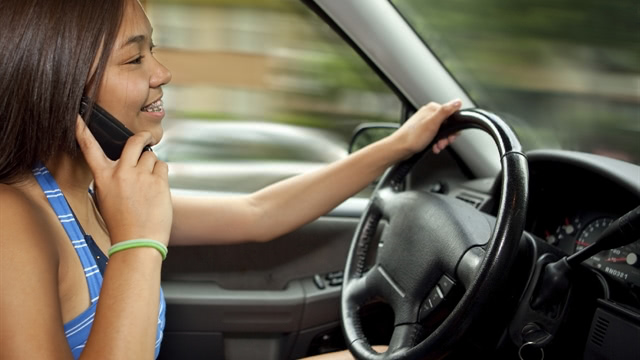If you have a teenager at home, you know how unpredictable they can be. But give a teen the car keys and a driver’s license, put him or her behind the wheel, and throw a few friends into the mix, and that impulsivity and unpredictability might just turn deadly!
Training Teens at Risk
According to Trafficsafety.org, the biggest risk facing teens today is not drugs, alcohol, school violence or suicide. Instead, teen drivers are more willing to take risks that wiser, more experienced drivers would avoid—leading to motor vehicle crashes that injure and kill thousands of kids each year.
As parents concerned about your children and their safety, you do everything possible to protect your kids and teach them good driving habits. But the pressures of living and working, time constraints and a lack of knowledge and resources can make helping your teenager learn to drive difficult, to say the least.
Still, experts say parental coaching is one of the most effective ways to counter immaturity, and train and protect teenage drivers when they hit the road.
In fact, with the right influence, wisdom and knowledge under his belt, your young driver can get all the tools he needs to avoid becoming a statistic—and influence his friends to become safe drivers as well.
Some Things You May Not Know
- 84 percent of fatal crashes involving 16- to 17-year-olds are due to a combination of inexperience, distraction, speed, fatigue, driving at night and failing to buckle up. The remaining 16 percent involve alcohol.
- Two-thirds of teen car occupants killed in car accidents aren’t wearing seat belts.
- 16-year-olds are three times more likely to die in a car crash than anyone else.
- Teens driving with two or more teen passengers have a five times greater chance of dying.
- 40 percent of all teen driver fatalities result from speeding.
- Two-thirds of fatal crashes involving teenagers are a result of driver error.
- Young drivers and their passengers are four times more likely to be involved in traffic accidents than older drivers.
Talk about sobering statistics! Tally those up and it’s easy to see the importance of parental influence in safe, responsible teen driving.
Mentoring young drivers and teaching them good habits also helps keep teen car insurance rates at bay—and protects youngsters as they gain the experience necessary to make sound driving decisions on their own.
Eight Quick Tips to Keep Teen Drivers Safe
If you’ve never taught a teenage son or daughter to drive, you may be clueless how to do so.
To help you get started, we’ve put together some quick tips to walk you and your teen through the learning process:
- Read about and enforce the graduated driver’s licensing laws in your state. GDL laws give young drivers increasing privileges over time, allowing them more freedom as they gain experience and learn under safer conditions. Contact your state department of insurance for more information.
- Schedule lots of supervised practice driving time. Though 50 hours are required in most states, a complicated skill like driving requires more for proficiency. Make use of everyday trips, allowing your teen to drive at different times of day, in various types of weather and under differing conditions, for a full range of driving experience. Practice makes perfect!
- Use positive reinforcement, praising your teen driver when he uses good judgment or drives responsibly. Conversely, use discipline when needed, explaining what the teen did wrong and how he could have handled the situation differently when faced with it again.
- Set a good example. Don’t engage in behaviors yourself that you don’t want your young driver engaging in, such as chatting on a cell phone while driving, neglecting to wear your seat belt or speeding. Practice what you preach!
- Discuss the route together before letting your son or daughter head out in the car alone. Make sure he knows where he’s going, how to get there and what the roads will be like along the way. Leave no room for surprise!
- Talk about situations that put your teenager at risk, such as carrying other teen passengers, eating or drinking while driving, or getting behind the wheel when they’re drowsy. Set ground rules for these types of activities—and make sure your teen clearly understands the danger involved and the consequences for not following them.
- Wait at least a year after your teen gets licensed to buy him a car. Meanwhile, let him share the family car. This keeps vehicle access in your control and allows you to impose its terms of use (such as always buckling up, never using a cell phone while driving and sharing responsibility for gas and repairs).
- Allow no passengers or nighttime driving for at least six months. Your teen’s risk of being involved in a crash increases exponentially with each adolescent passenger and at night. Unless you’re riding along, set a “no peer passengers” rule and require your young driver to be off the road by 9:30 or 10 each evening.
Parents as Role Models
Obvious or not, most teenage drivers look to their parents for advice.
Practice the three Cs when teaching your teen to drive: Caring, communication and consequences. With a little time and practice, your teen will learn the skills he needs—and grow into a courteous, safe driver you can be proud of.

2 thoughts on “When Your Teen Drives You Crazy, Get There Safely!”